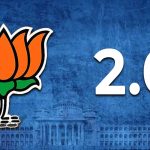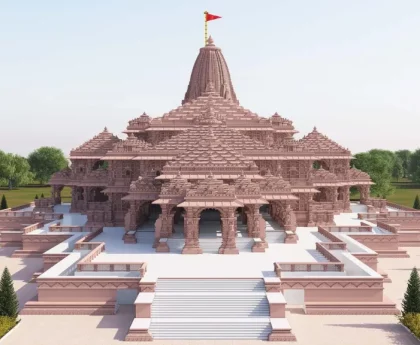Budget 2024 by Finance minister Nirmala Sitharaman : On February 1, Finance Minister Nirmala Sitharaman presented the Union Budget 2024 in the Lok Sabha, marking it as an interim budget just ahead of the Lok Sabha Elections. Notably, there were no changes announced in the tax slabs for both the old and new regimes. Despite aligning with the historical pattern of interim budgets, the Finance Minister’s surprising announcement of zero changes in direct and indirect taxes, including import duties, for the fiscal year 2024-25 has stirred reactions within the industry.

This decision to maintain the status quo in the tax framework during the interim period has raised eyebrows, as stakeholders were expecting potential revisions in response to economic trends and global developments. The anticipation now shifts to the comprehensive budgetary measures that will be unveiled in July after the formation of the new government following the General Elections.
Sitharaman had previously indicated that this interim budget would refrain from major announcements due to the upcoming polls scheduled for April-May this year. The focus is now on the full budget for the fiscal year 2024-25, which is slated to be presented after the General Elections.
Reflecting on Budget 2023, the Modi Government introduced several new regulations for income tax. A notable change was the designation of the new income tax regime as the default option. However, citizens retain the option to avail the benefits of the old tax regime, providing flexibility in personal taxation.
The presentation of the Interim Budget for the fiscal year 2024-25 by Finance Minister Nirmala Sitharaman on February 1, 2024, highlighted the profound positive transformation in the Indian economy over the last decade. The government, led by Prime Minister Shri Narendra Modi, faced significant challenges upon assuming office in 2014. However, through structural reforms and pro-people initiatives like ‘SabkaSaath, SabkaVikas,’ the country experienced economic rejuvenation, providing more opportunities for employment and entrepreneurship.
In the second term, the government continued its commitment to ‘SabkaSaath, SabkaVikas, and SabkaVishwas,’ focusing on inclusive development and growth. The ‘whole of nation’ approach under ‘SabkaPrayas’ helped overcome the challenges posed by the once-in-a-century pandemic, moving towards ‘Atmanirbhar Bharat’ and laying foundations for the ‘Amrit Kaal.’
The government’s inclusive development approach departed from earlier strategies by targeting each household and individual through initiatives like ‘housing for all,’ ‘hargharjal,’ and financial services for all. Free ration for 80 crore people, increased minimum support prices, and provision of basic necessities contributed to enhanced real income in rural areas, fostering growth and job creation.
The governance model prioritized social justice, focusing on four major castes: ‘Garib’ (Poor), ‘Mahilayen’ (Women), ‘Yuva’ (Youth), and ‘Annadata’ (Farmer). The government aimed to empower these segments, believing that their progress would drive the country forward. The ‘Direct Benefit Transfer’ of ₹34 lakh crore through PM-Jan Dhan accounts reduced leakages and facilitated savings of ₹2.7 lakh crore.
The empowerment of the poor, especially through schemes like ‘Garib Kalyan,’ has resulted in freeing 25 crore people from multi-dimensional poverty. The PM-SVANidhi scheme provided credit assistance to 78 lakh street vendors, contributing to their economic upliftment.
The welfare of farmers, referred to as ‘Annadata,’ was emphasized with schemes like PM-KISAN SAMMAN Yojana and PM FasalBimaYojana. The Electronic National Agriculture Market integrated 1361 mandis, providing services to 1.8 crore farmers with a trading volume of ₹3 lakh crore.
The youth, known as ‘AmritPeedhi,’ were a focus of the government’s efforts, with initiatives like the National Education Policy 2020 and PM Mudra Yojana, sanctioning 43 crore loans totaling ₹22.5 lakh crore for entrepreneurial aspirations. The country took pride in the achievements of its youth in sports, with a notable increase in chess grandmasters.
The empowerment of women gained momentum, with 30 crore Mudra Yojana loans given to women entrepreneurs, increased female enrollment in higher education, and various initiatives supporting their dignity and participation in the workforce.
The government’s exemplary track record in governance, development, and performance (GDP) was highlighted, with a focus on transparent, accountable, and people-centric administration. The economy exhibited macro-economic stability, robust investments, and improved living standards.
Economic management over the past decade included building infrastructure, digital public infrastructure, and tax reforms such as the Goods and Services Tax. The financial sector was strengthened, and initiatives like GIFT IFSC and IFSCA facilitated global capital flow.
In the global context, India assumed the G20 Presidency during challenging times, contributing to solutions for global problems. The recently announced India-Middle East-Europe Economic Corridor was deemed a strategic and economic game-changer.
The vision for ‘Viksit Bharat’ aimed for prosperity in harmony with nature, modern infrastructure, and opportunities for all citizens. The government outlined a strategy for ‘Amrit Kaal,’ focusing on economic policies fostering growth, inclusive development, and resource-efficient growth. Reforms, consensus-building, and support for MSMEs were central to the strategy.
The government pledged assistance for aspirational districts’ faster development, attention to the eastern region’s growth, and continued implementation of PM AwasYojana (Grameen). New schemes like rooftop solarization, housing for the middle class, and support for aspiring doctors and girls’ vaccination were introduced.
Efforts for value addition in agriculture, boosting farmers’ income, and comprehensive programs for dairy development and fisheries were emphasized. Technological changes, innovation, and research were acknowledged as crucial for catalyzing growth, employment, and development, ushering in a golden era for the tech-savvy youth.




